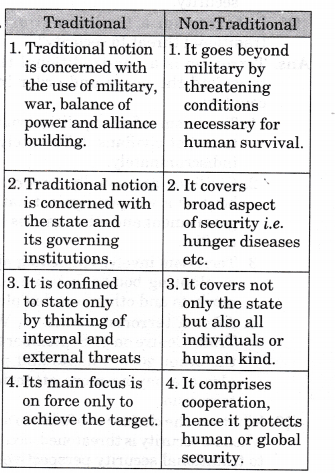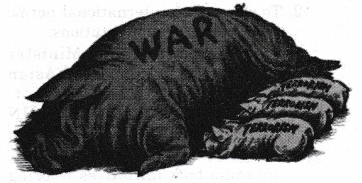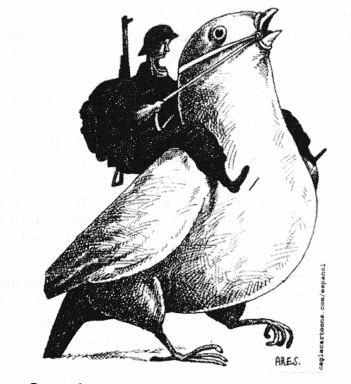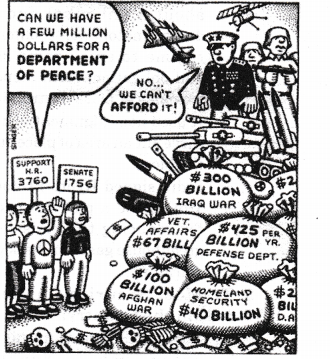
TEXTBOOK QUESTIONS SOLVED
1.Which of the st atements are ‘True’ about
globalisation?
(a) Globalisation is purely an economic phenomenon.
(b) Globalisation began in 1991.
(c) Globalisation is the same thing as westernisation.
(d) Globalisation is a multi-dimensional phenomenon.
Answer: (d) Globalisation is a multi-dimensional phenomenon.
2.Which of the statements are ‘True’ about
the impact of globalisation?
(a) Globalisation has been uneven in its impact on states and societies.
(ib) Globalisation has had a uniform impact on all states and societies.
(c) The impact of globalisation has been confined to the political sphere.
(d) Globalisation inevitably results in cultural homogeneity.
Answer: (a) Globalisation has been uneven in its impact on states and societies.
(b) Globalisation inevitably results in cultural homogeneity.
3. Which of the statem ents are ‘True’ about
causes of globalisation?
(a) Technology is an important cause of globalisation.
(b) Globalisation is caused by a particular community of people.
(c) Globalisation originated in the US.
(d) Economic interdependence alone causes globalisation.
Answer: (a) Technology is an important cause of globalisation.
(b) It originated in the US.
4. Which statements are ‘true’ about
globalisation?
(a) Globalisation is only about movement of commodities.
(b) Globalisation does not involve a conflict of values.
(c) Services are an insignificant part of globalisation.
(d) Globalisation is about worldwide interconnectedness.
Answer: (b) Globalisation does not involve a conflict of values.
(d) Globalisation is about worldwide interconnectedness.
5. Which of the statements are False about globalisation?
(a) Advocates of globalisation argue that it will result in greater economic growth.
(b) Critics of globalisation argue that it will result in greater economic disparity.
(c) Advocates of globalisation argue that it will result in cultural homogenisa¬tion.
(d) Critics of globalisation argue that it will result in cultural homogenisation.
Answer: The statements (b) and (d) are false about globalisation.
6. What is worldwide interconnectedness? What are its components?
Answer: The worldwide interconnectedness implies to interlink the world through free flow of goods and services, technology, ideas and people across the globe to extend globalisation. This contains three components:
1. Capital Flow: It is the flow of resources through loans or business investments among the countries.
2. Trade Flows of Goods: It refers to exchange of goods among countries.
3. Labour Flow: It refers to ‘Brain drain’ by creating favourable conditions for employment.
7. How has technology contributed to globalisation?
Answer: Technical equipments as cell phone, internet, telephone and microchip have contributed to globalisation by exchanging ideas, capitals and people to make convenient to move from one place to another at a fast pace to stimulate the process of globalisation.
8. Critically evaluate the impact of the changing role of state in the developing countries in the light of globalisation?
Answer: The impact of changing role of state in the developing countries in the light of globalisation can be summed up as follows:
1. Globalisation reduces the state capacity i.e. the ability of governments to do what they do.
2. Market becomes the prime concern to set down economic and social priorities.
3. Multinational companies effect on the decisions taken by government because their own interest fulfillment also depends on government policies.
4. The old welfare state is now giving way to more minimalist state to perform certain core functions as maintenance of law and order and the security.
5. State also withdraws from many of its welfare functions taken place at the level of economic and social well¬being.
6. To some extent developing countries have received a boost as a result of globalisation and became more strong and powerful clue to emergence of new technology.
9. What are the economic implications of globalisation? How has globalisation impacted on India with regard to this particular dimension?
Answer: (A) Economic Implications of Globalisation (Positive)
1. It involves greater economic flows among various countries.
2. It has enhanced trade in commodities among countries.
3. The restrictions on the imports and movement of capital have also been reduced.
4. This has spread internet and computer related services across national boundaries.
(B) Negative Economic Implications
1. Economic globalisation has created diverse opinion all over the world as to benefit only a small section of society.
2. It does not have equality at par the movement of people across the globe i.e. developed countries
have carefully guarded their borders with visa policies to ensure job security to their own citizens.
3. It has created disparities among states also by making the rich more richer and the poor more poorer.
Impact of Globalisation on India
1. More new jobs have been created in the MNCs like cell phones, fast food etc.
2. India is playing a crucial role among developing countries in trade and commerce by making some companies multinational themselves
i. e. Tata Motors, Ranbaxy etc.
3. Foreign Direct Investment have also been increased.
4. It has invited inflow of private foreign capital and export oriented activities.
10. Do you agree with the argument that globalisation leads to cultural heterogeneity?
Answer: Cultural consequences do not assume to lead to cultural heterogeneity only. All cultures accept outside influences all the time. Some external influences may be negative even to reduce our choices. Sometime external influences enlarge the choices or modify our culture without overwhelming the traditions
i. e. the burger is not a substitute for a masala dosa, blue jeans can go well with a homespun Khadi-Kurta (a nique new combination by external influences). Hence, it can be said that globalisation does not lead cultural heterogeneity every time but it is supportive to promote cultural outlook and cultural homogenisation.
11. How has globalisation impacted on India and how is India in turn impacting on globalisation?
Answer: Impact of Globalisation on India:
1. More new jobs have been created in the MNCs like cell phones, fast food etc.
2. India is playing a crucial role among developing countries in trade and commerce by making some companies multinational themselves
i. e. Tata Motors, Ranbaxy etc.
3. Foreign Direct Investments have also been increased.
4. It has invited inflow of private foreign capital and export oriented activities. India in turn impacting:
1. Through responding to 1991 financial crisis, Indian economy was liberalised to attract foreign direct investment.
2. India introduced new trade policy reforms to remove tariffs and restrictions imposed on imports.
3. Under industries, it abolished licensing system exempting few specified industries only.
4. Banking operations by private sectors were permitted to expand in the country.
5. To promote globalisation, India has adopted an open economy.
MORE QUESTIONS SOLVED
Very Short Answer Type Questions [1 Mark]
1. To what extent does globalisation provide opportunities as well as challenges?
Answer: Globalisation creates new jobs in industries and MNCs and increases the volume of trade in goods and services. As a challenge it reduces the capacity of state to take decisions on their own.
2. Define Globalisation.
Answer: Globalisation refers to integration of an economy with the other country based on interdependence.
3. What is WSF?
Answer: WSF is the World Social Forum, a global platform to bring together a wide coalition of human rights activists, environmentalists and women activists .
Very Short Answer Type Questions [2 Marks]
1 .“Welfare State is getting replaced by market.” Analyse the reason for this change.
Answer: Globalisation results in an erosion of state capacity. All over the world, the old welfare state is now giving way to a more minimalist state that performs certain core functions such as maintenance of law and order and the security of its citizens. However, it withdraws from many of its earlier welfare functions directed at economic and social well¬being. In place of the welfare state, it is the market that becomes prime determinant of economic and social priorities. The entry and the increased role of MNCs all over the world leads to reduction in the capacity of government to take decisions on their own.
2. How far is it correct to say that powers of states have actually increased due to globalisation?
Answer: To some extent globalisation increases the activities of state to help in development of economy as well as state capacity has received a boost also with enhanced technologies available at the disposal of state to collect information about its citizens.
3. What are two thrust areas of Globalisation?
Answer: Globalisation has two thrust areas:
1. Liberalisation provides freedom of trade and investment, eliminate restrictions imposed on external trade and payments and expand technological progress to globalise faster.
2. Privatisation permits MNCs to produce goods and services inside the country to attract FDI.
4. Which factors have contributed to the process of globalisation?
Answer: Process of globalisation is the result of:
1. Historical factors.
2. Role of international organisations like JMF and WTO.
3. Liberalisation and privatisation.
4. Technological innovations.
5. Mention positive impact of globalisation.
Answer: 1. Increase in the volume of trade in goods and services.
2. It attracts private foreign capital ‘investment’.
3. It creates new job opportunities.
4. It raises standard of living.
5. It increases production efficiency and healthy competition.
6. It attracts Foreign Direct Investment also.
6. Mention negative impact of globalisation.
Answer: 1. Globalisation has not generated much more employment opportunities because it needs highly skilled people only.
2. The foreign companies focus on their profit orientation projects only in place of social welfare.
3. It has widened income disparities by making the rich richer and the poor more poorer.
4. Gradually, globalisation is also a reason for depletion of flora and fauna in country.
5. Even farmers are supposed to be well educated if they want to use modern methods of cultivation.
7. Can we say that Globalisation is only an economic dimension?
Answer: No, globalisation is not only an economic dimension because it is a multi¬dimensional concept having political, economic and cultural manifestations. Globalisation is the process of exchange of ideas, capital, commodities and people.
8. “ Globalisation is a multidimensional concept”. Justify the statement.
Answer: Globalisation refers to integration of an economy with the other countries based on interdependence. It is a multidimensional concept having political, economic, cultural manifestations. It is the process of exchange of ideas, capital commodities and people.
Short Answer Type Questions [4 Marks]
1. Mention any four political consequences of globalisation.
Answer: Political consequences are positive and negative both as:
Negative Aspects
1. Globalisation results in an erosion of state capacity, that is the ability of government to do what they do.
2. The old welfare state is now giving way to more minimalist state that performs certain core functions such as maintenance of law and order and the security of its citizens.
3. Sometimes state withdraws from many of its earlier welfare functions directed at economic and social well being.
4. Market becomes prime determinant to settle down social and economic priorities in place of welfare.
Positive Aspects
1. The primary status remains unchallenged basis of political community.
2. To some extent developing countries have received a boost to become more powerful and strong.
2. Explain any two economic consequences of globalisation.
Answer: 1. Positive Economic Consequences
(a) It involves greater economic flows among various countries.
(b) It has enhanced trade in commodities among countries,
(c) The restrictions on the imports and movement of capital have also been reduced.
2. Negative Economic Consequences
(а) It has created diverse opinion all over the world so as to benefit only a small section of society.
(b) It does not have equality at par the movement of people across the globe i.e. Developed countries have carefully guarded their borders with visa policies to ensure job security to their own citizens.
3. What is globalisation? Highlight any three causes of globalisation.
Answer: Globalisation is integration of an economy with other economies alongwith the free flow of trade and capital. Process of globalisation is the result of:
1. Historical factors
2. Role of International Organisations like IMF and WTO.
3. Liberalisation and Privatisation
4. Technological innovations.
4. Explain any two positive and two negative effects of globalisation.
Answer: I. Positive Effects (Any two).
1. Increase in the volume of trade in goods and services.
2. It attracts private foreign capital investment.
3. It creates new job opportunities.
4. It raises standard of living.
5. It increases production efficiency and healthy competition.
6. It attracts foreign Direct Investment also.
2. Negative Effects:
1. It has widened income disparities by making the rich richer and the poor more poorer.
2. Gradually, globalisation is also a reason for depletion of flora and fauna in country.
5. Explain any four consequences of globalisation.
Answer: 1. Economic Consequences
(a) It has involved greater trade in commodities across the globe.
(b) The restrictions imposed by other countries on allowing imports have beenreduced.
2. Cultural Consequences
(a) The rise of uniform culture called as cultural homogenisation.
(b) Global culture is the imposition of western culture on rest of the world.
3. Political Consequences
(а) In place of welfare state it is the market to become the prime determinant of economic and social priorities.
(b) The entry and increased role of MNCs all over the world leads to reduction in capacity of governments to take decisions on their own.
4. Others
(а) The left wing protests against economic liberalisation.
(b) Indian social forum also raised voices against globalisation.
6. “Globalisation has shifted power from nation states to global consumers.” Justify the statement.
Or
What is the impact of globalisation on state’s sovereignty?
Answer: The impact of changing role of state in developing countries in the light of globalisation can be summed up as follows:
1. Globalisation reduces state capacity i. e. the ability of governments to do what they do.
2. Market becomes the prime determinant to down economic and social priorities.
3. Multinational companies effect on decision taken by governments because their own interest fulfillment depends on government policies.
4. The old Welfare state is now giving way to more minimalist state to perform certain core functions as maintenance of law and order and the security.
7. What is meant by globalisation? Explain any three cultural consequences of globalisation.
Answer: Globalisation is integration of an economy with the other economies alongwith the free flow of trade and capital. Its cultural consequences can be summed up as follows:
1. The rise of uniform culture as cultural homogenisation.
2. Global culture is imposition of western culture of rest of the world.
3. Sometimes, external influences enlarge the choices or modify over culture without overwhelming the traditions.
8. Does globalisation lead to ‘cultural ho-mogenisation’ or ‘cultural heterogeniza- tion’ or both? Justify.
Answer: Globalisation leads to both:
1. Though cultural homogenisation is an arena of globalisation the same process generates the opposite effect also which prompts each culture to dominate over other culture resulting into heterogenisation.
2. Globalisation leads to the rise of uniform culture known as cultural homogenisation i.e. the influence of western culture.
3. The differences among powers remain the same despite the exchange of cultures. Hence it may be said that cultural exchange is only one of many processes.
9. A militant group issued a statement threatening college girls who wear western clothes’. Analyse.
Answer: This statement refers to the cultural implications of globalisation in the form of fear of a defence group about the imposition of western culture to lead a shrinkage of rich cultural heritage.
Passage Based Questions[5 Marks]
1. Read the following passage carefully and answer the questions:
At the most simple level, globalisation results in an erosion of state capacity, that is, the ability of government to do what they do. All over the world, the old ‘welfare state’ is now giving way to a more minimalist state that performs certain core functions such as the maintenance of law and order and the security of its citizens. However, it withdraws from many of its earlier welfare functions directed at economic and social well-being. In place of the welfare state, it is the market that becomes the prime determinant of economic and social priorities. The entry and the increased role of multinational companies all over the world leads to a reduction in the capacity of governments to take decisions on their own. At the same time, globalisation does not always reduce state capacity. The primacy of the state continues to be the unchallenged basis of political community. The old jealousies and rivalries between countries have not ceased to matter in world politics. The state continues to discharge its essential functions (law and order, national security) and consciously withdraws from certain domains from which it wishes to. States continue to be important. Indeed, in some respects state capacity has received a boost as a consequence of globalisation, with enhanced technologies available at the disposal of the state to collect information about its citizens. With this information, the state is better able to rule, not less able. Thus, states become more powerful than they were earlier as an outcome of the new technology.
Questions
1. How does globalisation effect on state capacity?
2. How have multinational companies effected the states?
3. How does the old welfare state react to globalisation?
Answer:
1. It reduces state’s capacity and ability of government to do what they do.
2. The entry and increased role of MNCs all over the world leads to reduction in the capacity of government to take decision on their own.
3. The old welfare state is now giving way to a more minimalist state that performs certain core functions i.e. maintenance of law and order and security of its own citizens.
2. Read the following passage carefully and answer the questions:
Advocates of economic globalisation argue that it generates greater economic growth and well-being for larger sections of the population when there is de-regulation. Greater trade among countries allows each economy to do what it does best. This would benefit the whole world. They also argue that economic globalisation is inevitable and it is not wise to resist the march of history. More moderate supporters of globalisation say that globalisation provides a challenge that can be responded to intelligently without accepting it uncritically. What, however, cannot be denied is the increased momentum towards inter-dependence and integration between governments, businesses, and ordinary people in different parts of the world as a result of globalisation.
Questions
1. What is economic globalisation?
2. How does economic globalisation benefit the whole world?
3. How does the moderate supporters of globalisation view it?
Answer:
1. Economic globalisation generates great or economic growth and well being for larger section of population when there is deregulation.
2. Economic globalisation gives opportunities to countries to do best in their economy.
3. Moderate supporters of globalisation view it as a challenge to be responded intelligently without accepting it uncritically.
Long Answer Type Questions [6 Marks]
1. Explain globalisation. How has technology contributed in promoting globalisation?
Answer: Globalisation as a concept fundamentally deals with flows. These flows could be of various kinds — ideas moving from one part of the world to another, capital shunted between two or more places, commodities being traded across borders, and people moving in search of better livelihoods to different parts of the world. The crucial element is the ‘worldwide interconnectedness’ that is created and sustained as a consequence of these constant flows.
While globalisation is not caused by any single factor, technology remains a critical element. There is no doubt that the invention of the telegraph, the telephone and the microchip in more recent years has revolutionised communication between different parts of the world. When printing initially came into being it laid the basis for the creation of nationalism. So also today we should expect that technology will affect the way we think of our personal but also our collective lives.
The ability of ideas, capital, commodities and people to move more easily from one part of the world to another has been made possible largely by technological advances. The pace of these flow may vary.
2. Explain any three benefits of globalisation with examples.
Answer: 1. Economic Benefits
1. It involves greater economic flows among various countries.
2. It has enhanced trade in commodities among countries.
3. The restrictions on the imports and movement of capital have also been reduced.
4. This has spread internet and computer related services across national boundaries.
2. Technological Benefits
Technical equipments as telephone, internet, telephone and microchip have contributed to globalisation by exchanging ideas, capitals and people to make convenient to move from one place to another at a fast pace to stimulate the process of globalisation.
3. Political Benefits
1. The primary status remains unchallenged on the basis of political community.
2. To some extent developing countries have received a boost to become more powerful and strong.
3. Assess any three basics on which globalisation is being resisted in India.
Answer: Resistance to globalisation in India has come from different quarters:
1. Left using protests to economic liberalisation was voiced through political parties as well as through forum like the Indian Social Forum.
2. Trade Unions and farmer’s interests have also organised protests against MNCs.
3. The patenting of certain plants like Neem by American and European firms has also generated protests.
4. Resistance has come from political parties also in the form of objecting to various cultural influences like availability of foreign T.V. channels provided by cable networks, celebration of Valentine’s Day and Westernisation of dress code.
4. How do the critics view the process of globalistion?
Answer: Globalisation has invited some strong criticisms also despite its positive impacts. Its critical arguments can be categorized as:
1. Economic 2. Political
3. Cultural
1. Economic:
(a) Reduction in subsidies on mass consumption goods to make foreign creditors powerful.
(b) It has grown disparity between the rich and the poor nations by making the rich more richer and the poor more poorer.
(c) Even states have also created the same disparities between developed and developing nations.
2. Political:
(a) Welfare functions of the state has been reduced.
Picture Based Questions
(b) Sovereignty of states has been affected.
(c) States have become weak to take their own decisions.
3. Cultural:
(a) People lose their age old values and traditions.
(b) The world begins to look more like the dominant power over less powerful society.
(c) It leads to shrinking of rich cultural heritage of the entire globe.
Picture Based Questions[5 Marks]
1.Study the picture given below and answer the questions that follow: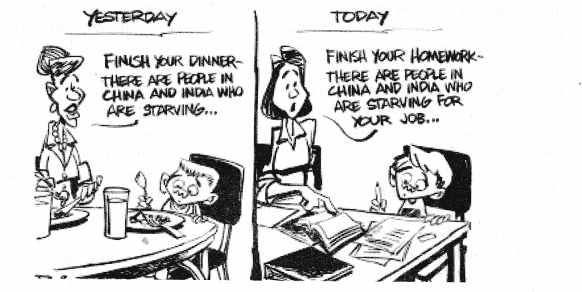
Questions
1. What does the cartoon comment?
2. What is referred under the title ‘Yesterday’?
3. What message does the title ‘Today’ convey?
Answer:
1. Cartoon comments on the changing scenario due to globalisation.
2. It refers to earlier conditions of developing countries who were starving due to less growth in their economy.
3. Globalisation opened doors for new entrants from developing nations and resulted into brain drain.


